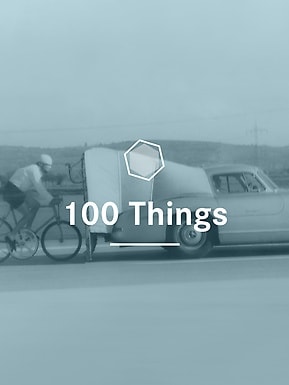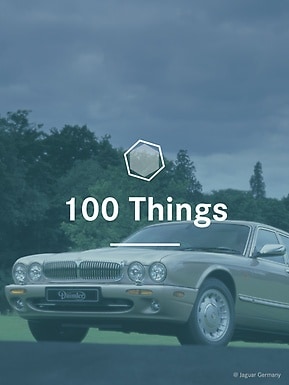Before a new car is launched on the market, the development engineers rack up countless test kilometres in prototypes and pre-production vehicles, testing the systems and components of future Mercedes-Benz models in urban environments as well as overland and on motorways. This is vital, especially since the advent of electronic driving assistants and automated driving functions.
100 Things You Should Know About Mercedes-Benz | #23

Moving-base driving simulator: Virtual reality on tracks.
Every new Mercedes-Benz model is the result of intensive development work and extensive testing. Not all road tests take place on real roads or test sites these days – so much is virtual. Once again, Mercedes was the pioneer: the moving-base driving simulator in Sindelfingen, which went into operation ten years ago, is still one of the most capable of its kind.


Virtual gets real
For over ten years now, many of these tests have been conducted in Sindelfingen – without having to leave the factory premises or drive to a closed-off test track. All it takes is to transfer the test vehicle to a capsule on supports, or the so-called testing room, and connect its control devices to the driving simulator's software. As soon as the test driver gives a steering command or hits the accelerator or brake pedal, the display on a 360-degree screen around the car changes accordingly.
The moving-base driving simulator not only recreates the road surface and other road users realistically, but even allows for dynamic driving manoeuvres such as lane-changes. The entire installation moves around in the specially built hall to create the most realistic driving experience possible – at a maximum speed of ten metres per second.
Autonomous driving test chamber
The new Mercedes-Benz S-Class also spent plenty of hours in the moving capsule – it was used for some of the testing and verification work on the DRIVE PILOT. The moving-base driving simulator also plays a decisive role on the road to autonomous driving: during virtual test drives involving automated vehicles, many different scenarios can be enacted using the simulator – quickly and efficiently. This also includes situations that do not or only rarely occur during testing on real roads. Furthermore, the safety experts can provoke driving situations in which the driver has to take control back from the vehicle systems, with no danger involved at all. How quickly do humans react to certain signals? How long are their reaction times? These important findings are fed directly into product development.
The moving-base driving simulator that commenced operation in 2010 at the Mercedes-Benz Technology Center (MTC) in Sindelfingen was the most modern of its time, and is still one of the most capable facilities in the automotive industry. Key features include a hexapod with a dome containing a 360-degree screen with a photo-realistic representation of the digital environment, a fast electric power system and a twelve-metre-long rail for transverse or longitudinal movements.
Real becomes even more virtual
The next stage in simulator technology is also being tested in the conceptual phase. Together with their colleagues from the Virtual Reality Center (VRC), the driving simulator experts from Mercedes-Benz have developed a new XR driving simulator, where real and virtual surroundings blend even more than before. Apart from a driver’s seat, a steering wheel, the pedals and a start switch, there are no longer any actual physical controls – the tester just puts on a pair of digital smartglasses and navigates completely in a virtual world. The XR driving simulator is particularly useful for developing the interiors of future Mercedes models.
A safety pioneer in driving simulators to boot
Mercedes-Benz therefore remains true to its pioneering role in driving simulators. As early as May 1985, the first driving simulator developed in-house went into operation at the then Daimler-Benz Research Center at the Berlin-Marienfelde site. The motion system was unparalleled in the automotive industry at the time.





































